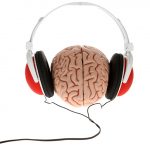
Researchers discover way to make lithium-ion battery components out of recycled glass bottles
Tuesday, August 21, 2018 by Russel Davis
http://www.futuresciencenews.com/2018-08-21-researchers-discover-way-to-make-lithium-ion-battery-components-out-of-recycled-glass-bottles.html

Scientists have found a way to develop nanosilicon anodes, essential components of lithium-ion batteries, using recycled glass bottles. According to researchers at the University of California, Riverside’s Bourns College of Engineering, silicon anodes can store significantly more energy compared with traditional graphite anodes. However, the research team noted that the expansion and shrinkage that take place during the charge and discharge make silicon anodes unstable. Developing relatively smaller nanosilicon anodes was found to address this issue, the experts said.
The research team also noted that incorporating the nanosilicon anodes with pure silicon dioxide and a low-cost chemical reaction produced lithium-ion half-cell batteries that exhibited more efficient energy storage. The research team underwent a three-step process to create the batteries. First, the experts crushed and ground recycled wine bottles into fine white powder. Then, a magnesiothermic reduction process was induced to transform the silicon dioxide particles into nanostructured silicon. Finally, the minute particles were coated with carbon to improve their stability. Doing this also helped improve the energy storage properties of the batteries.
The research team then conducted a series of laboratory tests to assess the effectiveness of glass bottle-based silicon anodes against traditional batteries. According to the lab results, the carbon-coated nanosilicon anodes exhibited superior electrochemical performance compared with conventional batteries. The researchers said glass bottle-derived anodes had a capacity of 1420 mAh/g at C/2 rate after 400 cycles. In addition, the researchers noted that the nanosilicone anodes stored nearly four times more energy than traditional graphite anodes. According to the study’s lead author, one recycled glass bottle may provide sufficient nanosilicon to manufacture hundreds of coin cell batteries. One bottle may also provide enough silicon to produce three to five pouch batteries, the lead author added.
“We started with a waste product that was headed for the landfill and created batteries that stored more energy, charged faster, and were more stable than commercial coin cell batteries. Hence, we have very promising candidates for next-generation lithium-ion batteries,” said lead author Changling Li on ScienceDaily.com.
The research team filed a patent for the nanosilicon anodes. The findings were published in the journal Scientific Reports.
Fast facts about glass bottle recycling
The researchers noted that billions of glass bottles end up in landfills despite modern glass recycling programs. According to the Glass Packaging Institute (GPI), glass is an ideal raw material for research and development as it is 100 percent recyclable. Glass can be recycled multiple times without losing its quality and purity, the GPI said.
The group also touted that glass is made from some of the most readily-available domestic materials such as soda ash, sand, limestone, and cullet. The glass industry defines cullet as furnace-ready recycled glass. The GPI also stated that glass can be a substituted for up to 95 percent of raw materials. In addition, glass recycling benefits manufacturers in many ways. According to the GPI, recycling glass may help curb emissions and raw material consumption. Recycling glass may also extend the life of plant equipment and was found to save energy, the group noted.
Furthermore, the group stressed that recycled glass is the primary component of glass production. According to the group, increased glass-use results in reduced energy requirements in the furnace. This, in turn, promotes overall savings. The GPI also noted that glass recycling may greatly benefit nature. Data from the U.S. Environmental Protection Agency (EPA) revealed that 41.3 percent of beer and soft drink bottles were recovered for recycling in 2013 alone. The EPA data also showed that 34.5 percent of wine and liquor bottles and 15 percent of food and other glass jars were recycled during the same period. According to the EPA, the overall percentage of glass recycling in 2013 was equivalent to taking 210,000 cars off the streets per year.
Learn more about the benefits of recycling at Environ.news.
Sources include:
Tagged Under: Tags: batteries, discoveries, electricity, future science, future tech, glass production, glass recycling, goodscience, lithium ion batteries, nanosilicon anodes, nanotechnology, power, recycling, Silicon, silicon anodes





